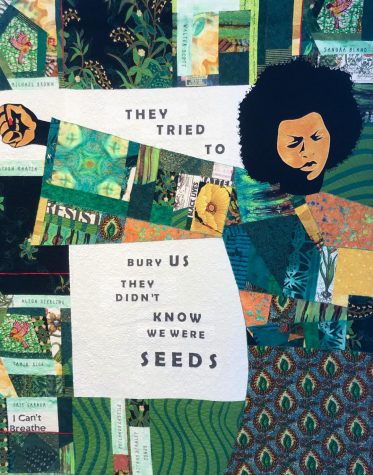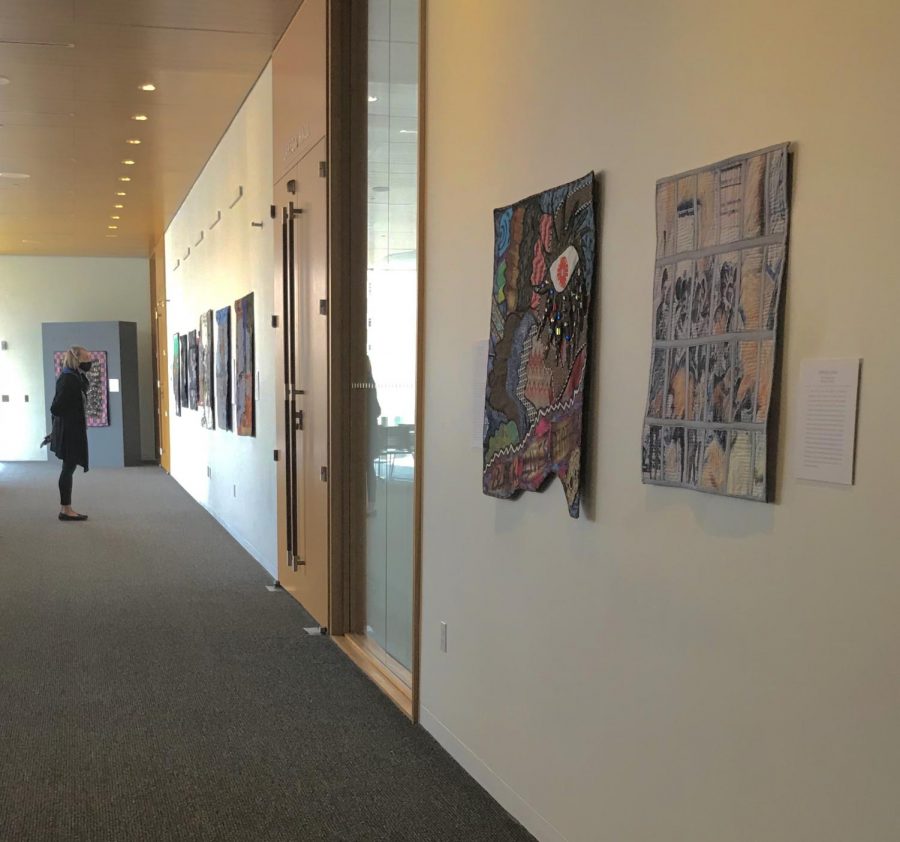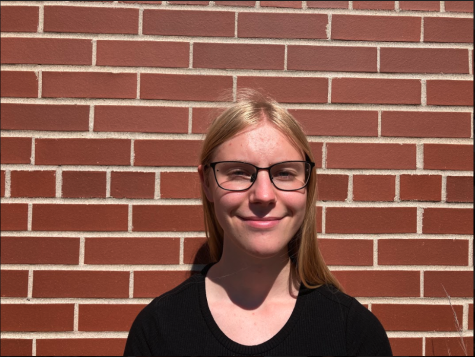Racial justice-inspired quilt exhibit is eye-opening
The American Swedish Institute’s ‘We Who Believe in Freedom’ educates and inspires
A woman studies quilts on display. The exhibit was on the first and second floors of the Osher Gallery.
November 3, 2020
When I told my friends and family that I attended an exhibition of quilts made by African Americans at the American Swedish Institute (ASI), they struggled to find a connection between a Swedish museum and African Americans. However, I thought the exhibition was fitting. Racism shows up everywhere, so to combat it, it must be actively counteracted everywhere.
According to the Textile Center website, the “We Who Believe in Freedom” exhibition ran Sept. 10–Nov. 1 at the ASI. It displayed the works of black quilters across the nation. It was free to attend, and registration and masks were required. It was part of a multi-site initiative called “We Are the Story” created in light of the murder of George Floyd. “We Are the Story” continues until June 2021.

The quilt that first caught my eye when I walked into the exhibit was “Power in Numbers” by Sharon Kerry-Harlan. The quilt depicts many dark faces with solemn but determined expressions. The quilt illustrates how individuals working together can accomplish great feats. Anyone who combats oppression, even in a small way, should be appreciated.
I learned about many civil rights activists from this exhibit. For example, a quilt titled “Iconic” by Earamachica Brown depicted Fannie Lou Hamer. Despite being described as a civil rights icon, I had never heard of her. I felt disappointed that my history classes overlooked this important person, as they do with many minority historical figures.
I was intrigued by “Remembering Brown Vs. Board of Education” by Ora Clay. This quilt uses color contrast to represent the segregation that existed between white students and students of color. The quilt celebrates the Supreme Court case that ended segregation. This quilt made me think about the racial divisions that persist in schools today. For example, I have observed that white students and students of color typically sit separately at lunch.
There were many powerful quilts at the exhibit. I was impressed by the intricate quilting and moved by the stories they told. I found parallels of hope, persistence and love presented in the quilts.
However, I was disappointed by the lack of attendees of color. As far as I could tell, everyone I saw at the ASI was white, myself included. This highlights the disproportionate difficulties people of color face when it comes to accessing art. According to this study, people of color are underrepresented in museums. Although the exhibit was free to attend, I wish the ASI had done more to reach out to communities of color.
“We Who Believe in Freedom”: ★★★★☆




